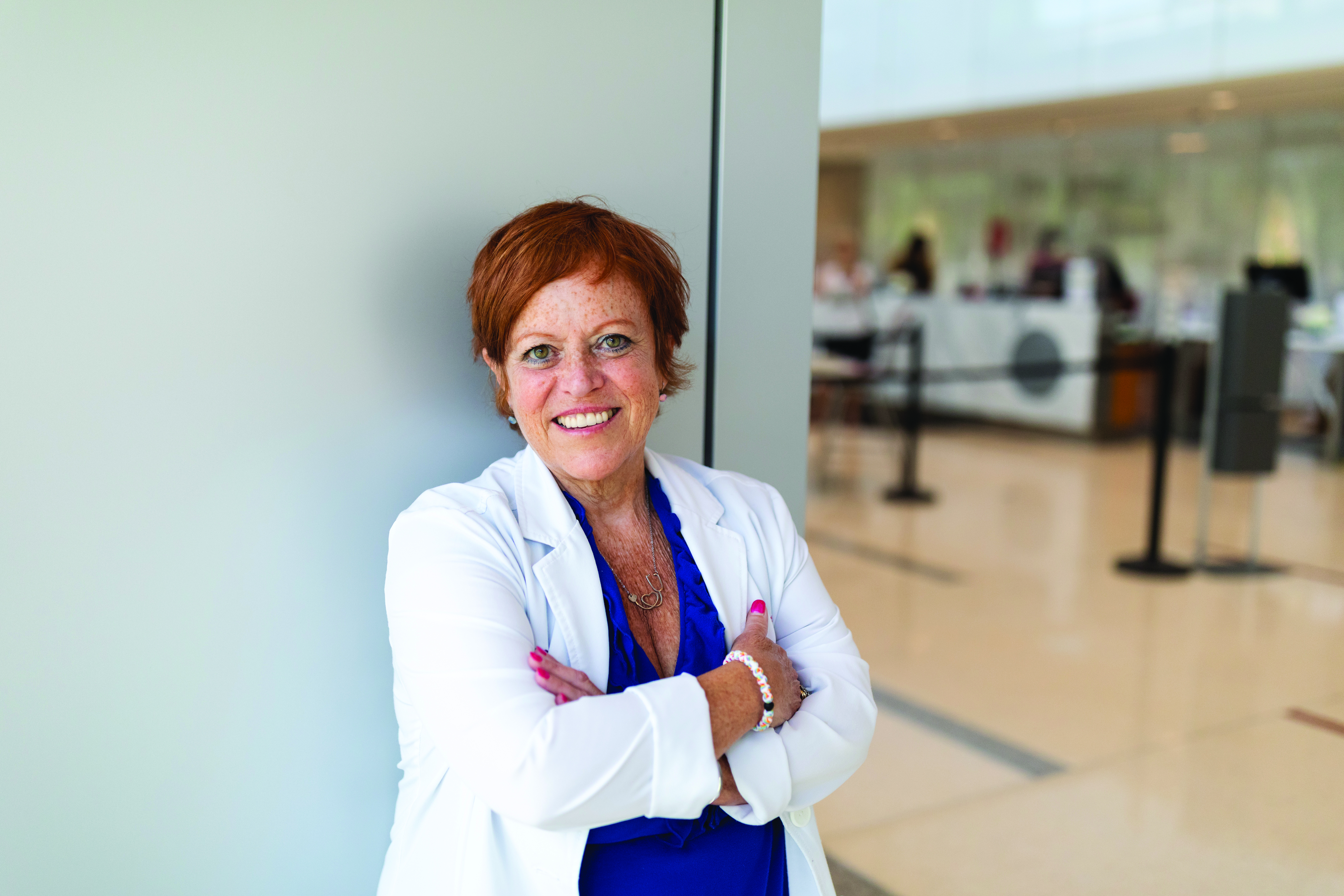Legislation and Cancer Care
Research and practice changes funded through healthcare legislation have influenced today’s care delivery across all settings: hospitals, clinics, and even homes. And with their constituents laser-focused on health in today’s pandemic society, legislators have never made that happen so quickly.
From the National Cancer Act to the Affordable Care Act to 21st Century Cures, nurses and patients have witnessed how policy can enable providers to break down barriers, improve access to care, and ultimately transform patient outcomes.

Oncology nurses and other healthcare professionals have a twofold role in policy changes and implementation: (a) advocates for their patients and profession with a seat at decision-making tables and (b) experts who understand and translate new laws for their patients and nursing practice. As new bills come before congressional committees, oncology nurses have tremendous opportunities to shape how laws are written and implemented into practice.
“With advocacy, we are called to engage in dialogue with lawmakers, civic leaders, and influencers to increase education, awareness, and funding in our communities to improve health, cancer screening, and early detection,” ONS member Arlyce Coumar, MN, RN, OCN®, advanced practice nurse in the clinical/nursing education department at the Fred Hutchinson Cancer Center (FHCC) in Seattle, WA, said.
Coumar holds several positions on local and national health policy committees. “I have learned to cultivate the confidence to trust my nursing background, my experience at the bedside, and my voice to talk to my legislators and leaders about ways that they can help our communities improve health, prevent cancer, advance cancer treatment, and expand access to care for our patients and their caregivers.”

“It’s important for oncology nurses to know what healthcare issues are being discussed,” ONS member Colleen O’Leary, DNP, RN, AOCNS®, EBP-C, associate director of evidence-based practice at the James Cancer Hospital and Solove Research Institute in Columbus, OH, added. “Taking a stance on issues that affect their patients and colleagues is important. It’s as easy as writing a letter, signing a petition, or even making a quick call to your elected officials.”
Policy’s Historical Effects on American Health and Cancer Care
Health policy has had a sequence of successes in protecting patients and increasing access to care. O’Leary and Coumar cited several landmark laws that still influence healthcare delivery and patient care today:
- National Cancer Act of 1971 (https://www.cancer.gov/about-nci/overview/history/national-cancer-act-1971): Granted the National Cancer Institute the authority to develop a national cancer program for research collaboration and funded new research centers, control programs, and an international research data bank
- Affordable Care Act (ACA) of 2010 (https://www.hhs.gov/healthcare/about-the-aca/index.html): Increased availability of affordable health insurance, expanded Medicaid, and designed medical care delivery methods to lower healthcare costs
- Health Insurance Portability and Accountability Act (HIPAA) of 1996 (https://www.cdc.gov/phlp/publications/topic/hipaa.html): Protected patients’ sensitive health information and their rights to understand and control how it is used
- Family and Medical Leave Act of 1993 (https://www.dol.gov/agencies/whd/fmla): Provided unpaid, job-protected leave for specified family and medical reasons with continuation of group health insurance coverage.
Coumar’s institution was one of the first 15 research centers funded through the National Cancer Act, and she’s been involved in FHCC’s interprofessional research on blood and marrow transplant since 1984.
“The nurses who were part of FHCC from the beginning—in the 1970s and 1980s—created a spirit of interprofessional teamwork with providers, scientists, and other members of the healthcare team to collaboratively solve the big problems in the early days of bone marrow transplant,” Coumar explained. “This early collaboration set the stage for the culture of inquiry and teamwork that is still present today in the practice of provider, scientists, and nurses looking to reduce the toxicity of this difficult treatment. A robust culture of incorporating research into patient care decisions led to nursing research and leadership in this field.”
ACA was pivotal step forward in improving access to quality cancer care, an ONS position and policy priority since 2012. “By subsidizing insurance, more families have access to primary care and cancer screening. When preventive care and screening are mandated, promoted, and funded, we can move health care upstream,” Coumar said.
O’Leary said that out of all the historic policies, oncology nurses encounter HIPAA compliancy and protecting patient confidentiality on a daily basis in all aspects of care. “When I carry patients’ protected health information with me for hospice care visits, for example, I have to shred all the documents right after—even notes that I take to remind myself of things to put into a report,” O’Leary said.
How Today’s New Policies Are Changing Cancer Care
Between the Cancer Moonshot and the COVID-19 pandemic, lawmakers are hearing from advocates like ONS, advocacy coalitions and patient groups, and nurses, other providers, and patients and families. And they’ve responded with a flurry of bills that funded resources, improved supply shortages, reduced disparities and inequality in accessing care, and supported healthcare workers’ own health and training. Here’s what they’ve meant to nursing practice.
21st Century Cures Act of 2016: The legislation accelerated (https://www.fda.gov/regulatory-information/selected-amendments-fdc-act/21st-century-cures-act) medical product development and made them more quickly and directly available to patients and modernized clinical trial designs and clinical outcome assessments. It addressed disparities in clinical trials by ensuring (https://orwh.od.nih.gov/sites/orwh/files/docs/2_Watson%20ACRWH%20Spring%202018.pdf) that women, children, and racial and ethnic minority populations are appropriately represented and improving research in sexual and gender minority populations.
Having the act in place prior to the pandemic enabled the United States to mobilize a faster response, O’Leary said. “The legislation allows for rapid movements in vaccines and medical device and product development, which we desperately needed during the beginning of the pandemic. And being able to use mobile devices to gather patients’ health information was critical when we were trying to decrease the number of in-person visits.”
21st Century Cures also enabled patients to access their own medical records. Although many patients find it beneficial, Coumar and O’Leary said it can have implications for the patient-provider relationship and opportunities for nurses to provide patient education.
“When people don’t fully understand what test results mean, they could depend on the internet for their prognosis,” O’Leary said. “It’s a double-edged sword.”
Coumar suggested that oncology nurses create healing and compassionate relationships with their patients and tailor their approaches to each patient’s individual informational capacity.
“Different patients handle the access to potentially emotion-triggering results differently than others,” Coumar said. “Some patients are empowered having access and time to reflect on results or manage their own care. Some patients are paralyzed with emotion and fear of the unknown. By creating relationships with their patients and recognizing that each is unique, nurses can advise them on whether they should avoid accessing the results before speaking with their healthcare team.”
Patients’ knowledge of their treatment plans and associated tests and what their results might reveal is another factor, O’Leary said. She advised informing patients and their families that they may see test results before their provider sees them. “Reassure them that you or the provider will contact them as soon as possible to discuss the results,” O’Leary said.
Coronavirus Aid, Relief, and Economic Security (CARES) Act of 2020: The CARES Act provided (https://home.treasury.gov/policy-issues/coronavirus/about-the-cares-act) fast and direct economic assistance at the onset of the COVID-19 pandemic. Additionally, the CARES Act Provider Relief Fund supported healthcare providers affected by the pandemic. According to the U.S. Department of Health and Human Services (https://www.hhs.gov/about/news/2021/09/10/hhs-announces-the-availability-of-25-point-5-billion-in-covid-19-provider-funding.html), the funding included billions of dollars in American Rescue Plan resources for providers who serve Medicaid, Children’s Health Insurance Program (CHIP), Medicare patients, and Provider Relief Fund Phase 4 resources.
“During the pandemic, nurses and patients alike were under undue stress like the rest of the nation,” O’Leary said. “Not being able to work and pay bills normally caused even more of a burden. The CARES Act gave a bit of a reprieve to those most in need.”
The act aided (https://home.treasury.gov/policy-issues/coronavirus/about-the-cares-act) American families and workers, small businesses, and state, local, and tribal governments through economic impact payments, recovery funds, and homeowner assistance programs. It also supported (https://www.hrsa.gov/provider-relief) healthcare providers through relief fund distributions, uninsured programs, and the COVID-19 Coverage Assistance Fund and allowed patients to continue their normal healthcare activities that might not have been covered by insurance.
Cancer Care Planning and Communications Act (CCPCA) of 2021: The act supplied (https://canceradvocacy.org/policy/cancer-care-planning-and-communications-act-ccpca) patients with a roadmap that promotes shared decision-making and empowers patients with information about their care through diagnosis, treatment, and survivorship. Coumar said that the bill also provided Medicare coverage for cancer care coordination and planning.
“For many patients, having a clear map of their treatment trajectory can be very comforting. And really emphasizing survivorship care plans has helped patients transition from active treatment to a more normal life. Having the continuing plan makes them feel more secure when they’re no longer under the watchful eye of their nurse and provider,” O’Leary said. “At the James, we have always involved patients in their care from the beginning. All patients get a plan outlining their treatments and testing, and they meet with our survivorship planning team to think of the future.”
Centers for Medicare and Medicaid Services (CMS) waivers: During a public health emergency, CMS may waive (https://www.cms.gov/coronavirus-waivers) or temporarily modify certain Medicaid, Medicare, CHIP, and HIPAA requirements called 1135 waivers (https://www.cms.gov/About-CMS/Agency-Information/Emergency/EPRO/Resources/Waivers-and-flexibilities), such as Medicare blanket waivers.
In O’Leary’s practice, the waivers allowed healthcare professionals to see patients when other visitors were prohibited and increased patient access to telehealth visits with the provider’s ability to bill for the visits.
“Telehealth has improved the ability to gain access to care and follow-up to cancer care and other chronic conditions,” Coumar added. “CMS waivers have shown what is possible for more rural areas. The access to broadband must follow.”
Take Action Today to Influence the Care of Tomorrow
Oncology nurses have long served as patient and family advocates in direct care. Using those advocacy skills with policymakers gives nurses an opportunity to create real change as a united voice for health, cancer prevention, early diagnosis, and treatment.
“There are almost 28 million nurses worldwide (https://www.who.int/publications/i/item/9789240003279) with 4.2 million in the United States (https://doi.org/10.1016/s2155-8256(21)00027-2). Nursing is the nation’s largest healthcare profession,” Coumar said. “In the United States, there are about (https://www.statista.com/topics/1244/physicians) four times as many nurses as physicians. If all nurses were willing to speak up to improve legislation and health policy, we could have a huge impact.”
Coumar suggested that oncology nurses inspire small changes in attitudes and behaviors to eventually shift the trajectory on healthcare policy and legislation. In addition, she urged nurses to use their voices at the local level and within their communities. See the resources in the sidebar for more ways to get involved.
“If we can show that with a little change in practice we can see greater outcomes for our patients, we can inform legislators of the benefits of certain policies,” O’Leary said.
